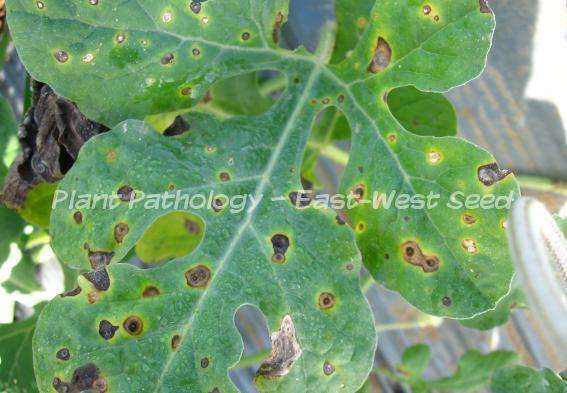Causal Agent:
Fungus (Cercospora citrullina)
| Characteristic Symptoms: | |
 |
Leaves and fruits can be affected particularly in hot humid conditions. |
 |
Leaf spots begin as small, round, brown lesions and often with white/light brown center. |
 |
Sometimes, spots are surrounded by a distinct yellow halo. |
 |
Under warm and wet conditions, the lesions expand and the leaves may appear blighted. |
| Conditions for Disease Development: | |
 |
The disease is common in humid tropic and subtropical regions. |
 |
The pathogen survives between crops on crop debris and weeds of the cucurbit family. |
 |
Conidia/spores are air-borne and are disseminated by wind, rain splashes, tools/implements and field workers. |
 |
Infection requires free water and is favoured by temperatures between 26-32°C, in which the disease develops rapidly with new infections occurring every 7-10 days. |
| Management and Control: | |
 |
Good field sanitation (i.e., remove and destroy infected plants/plant parts and cucurbit weed hosts) can help eliminate inoculum sources in the field.
|
 |
Crop rotation with non-cucurbit crops for 2-3 years will ensure elimination of inoculum in crop residues.
|
 |
A regular fungicide spray program of copper-based fungicides (e.g. Cupravit®, Super BlueⓇ, Vitigran blueⓇ, FunguranⓇ, KocideⓇ, Hydroxide superⓇ) and chlorothalonil (e.g. Daconil®, Agronil®, Yoda®, Rover®, Yoda 500Ⓡ) may help reduce incidence and severity especially when crops are susceptible and conditions are favorable for disease development. |
 |
Use resistant varieties, if available. |
| References: | |
| Compendium of Cucurbit Diseases (1996) by the American Phytopathological Society | |
To view other diseases, click here.
Need more help? Ask the Doctor.






